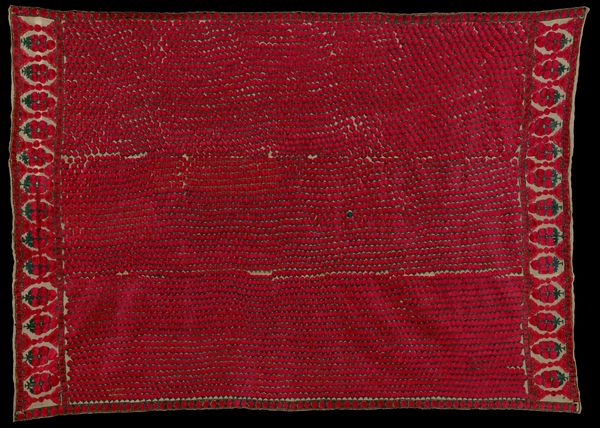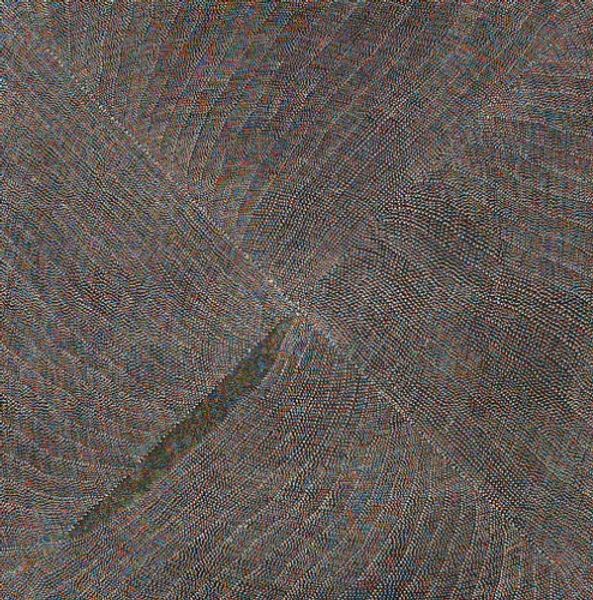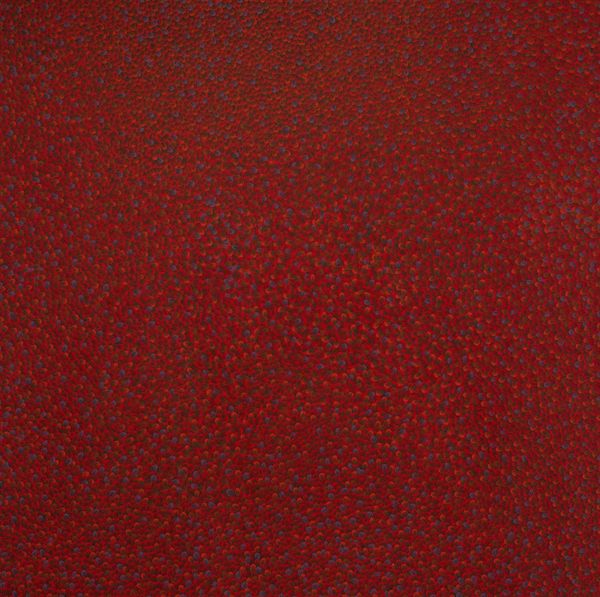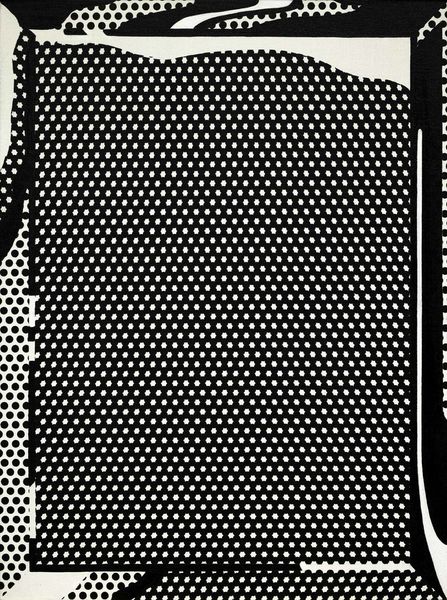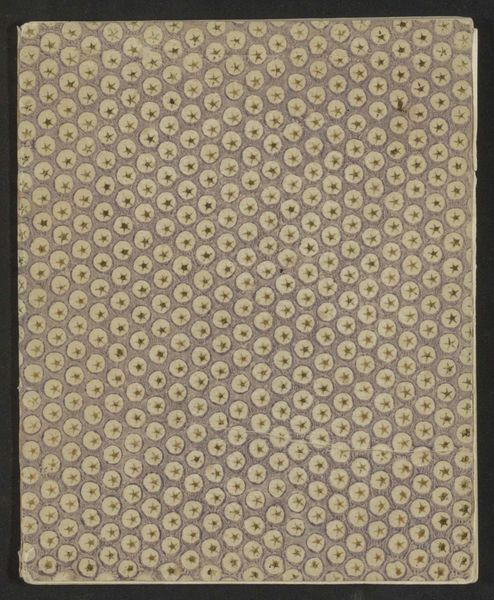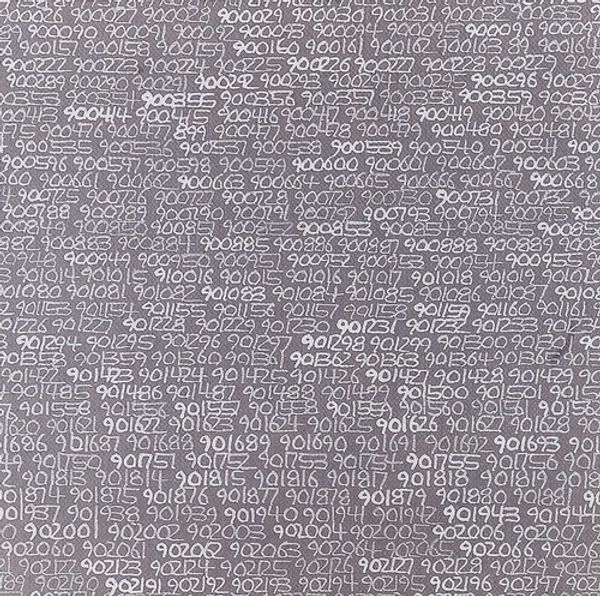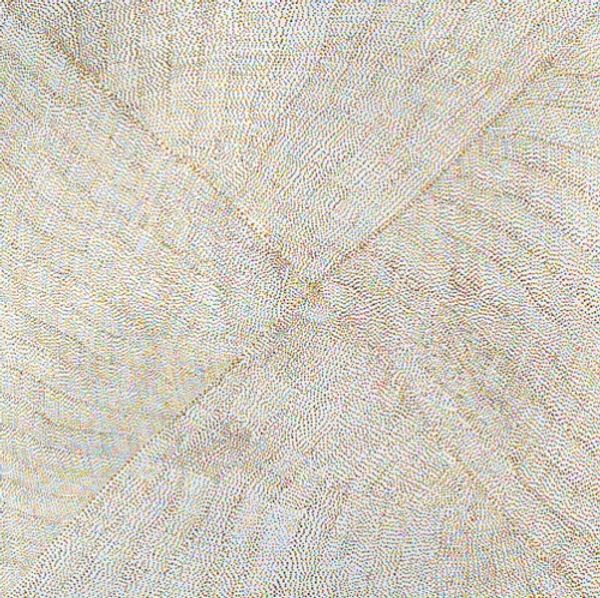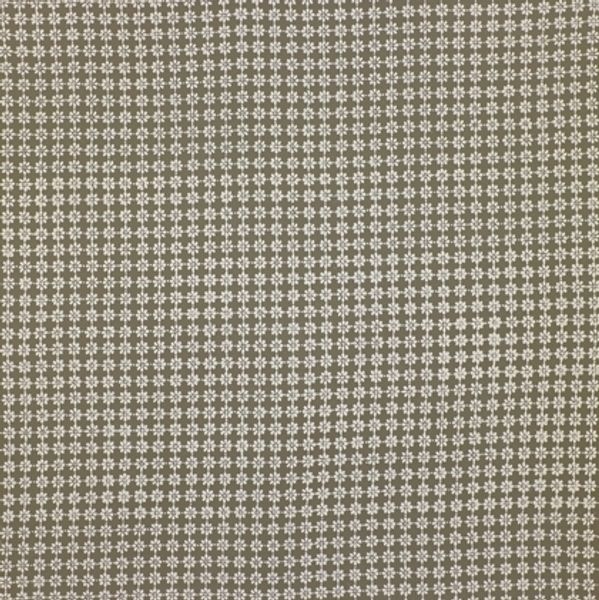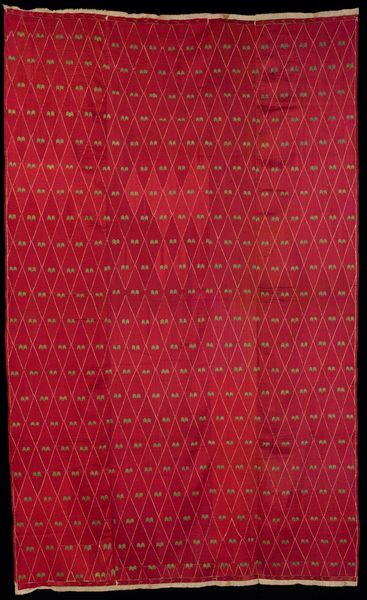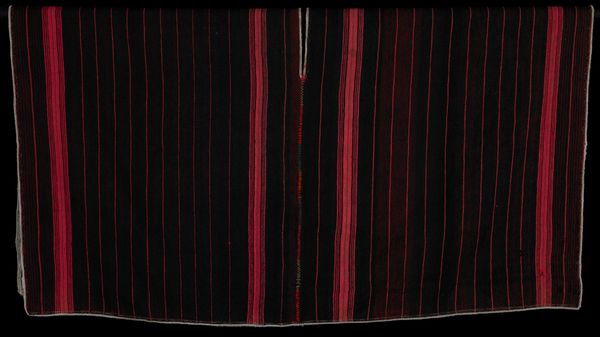
mixed-media, textile
#
mixed-media
#
pattern
#
textile
#
text
#
grainy texture
#
organic pattern
#
abstraction
#
line
#
texture
#
abstract art
Dimensions: 200 x 300 cm
Copyright: Carles Delclaux Is,Fair Use
Editor: This textile-based piece is called "ESPERMATOFEMINIS," created in 2009 by Carles Delclaux Is using mixed media. The pattern is quite striking, but almost unsettling, a kind of dark energy about it. How do you interpret the symbols and imagery at play here? Curator: Well, immediately I'm drawn to the title, and how it juxtaposes the masculine and feminine. The repeated ovoid shapes, almost seed-like against the dark ground, can be seen as a field of potential. But potential for what, exactly? Consider the cultural connotations of seeds – fertility, growth, but also fragility and vulnerability. Do you see any signs of a "feminine" symbol within the composition itself, or only as absence? Editor: The shapes themselves seem ambiguous, gender neutral almost. So maybe it's the absence of the obviously feminine that makes it interesting. The ground they are scattered upon has to carry the symbolic load. But, what could that symbolic association be? Curator: The ground – and it *is* grounded, earth-like in its darkness – suggests the subconscious, perhaps. Think of the history of weaving and textiles; traditionally considered "women's work", now disrupted and subverted with overt sexuality by the title. How does that interplay inform your reading of the artist's intentions, the history implied in his visual symbols? Does it remind you of anything, like some ancient glyph or woven textile? Editor: That contrast hadn't occurred to me; it shifts my perception considerably. I am drawn to its textures now, not just the symbols. There's something almost primal in that weaving context. The grounding that comes from literally interlacing, binding, something. I find myself really liking the friction there. Curator: And so, an artwork succeeds when it engages, prompts, invites further meditation. "ESPERMATOFEMINIS" compels one to reflect on cultural memory, gender and even our deepest held associations, doesn’t it? Editor: I agree. It's not just about seeing but about decoding cultural layers within an image. It enriches the whole viewing experience.
Comments
No comments
Be the first to comment and join the conversation on the ultimate creative platform.
